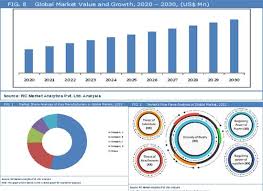As more people consider their pets as integral members of their families, the demand for comprehensive pet insurance has grown significantly. With the rise in veterinary costs and the increasing prevalence of chronic conditions in pets, pet insurance trends are rapidly evolving to meet the needs of modern pet owners. Understanding these trends and innovations can help pet owners make informed decisions about their pets’ health care.
The Evolution of Coverage Options
One of the most notable pet insurance trends is the expansion of coverage options. Traditional pet insurance policies typically covered accidents and illnesses, but modern policies now offer more extensive coverage, including wellness plans, routine care, and even alternative therapies like acupuncture and hydrotherapy. This evolution reflects a growing awareness among pet owners about the importance of preventive care and holistic treatment approaches for their pets.
Technology-Driven Innovations
Technology is playing a pivotal role in shaping the future of pet insurance. From AI-driven claim processing to telemedicine services for pets, these technological advancements are enhancing the efficiency and accessibility of pet insurance. For instance, some companies are now using AI to assess claims and reduce processing times, ensuring that pet owners receive reimbursements more quickly. Additionally, telemedicine services are becoming increasingly popular, allowing pet owners to consult with veterinarians remotely, which is particularly beneficial for those in rural or underserved areas.
Personalized Pet Insurance Plans
Just as personalized health insurance plans are becoming more common for humans, personalized pet insurance is an emerging trend. These plans are tailored to the specific needs of a pet based on factors such as breed, age, and pre-existing conditions. For example, certain breeds that are prone to genetic conditions may require more specialized coverage, and personalized plans can offer this. This trend towards customization ensures that pet owners are only paying for the coverage their pets actually need, making pet insurance more cost-effective.
The Role of Data and Analytics
Data and analytics are increasingly being utilized in the pet insurance industry to predict and mitigate risks. By analyzing data from various sources, such as veterinary records and pet behavior patterns, insurers can better assess the likelihood of a pet developing certain conditions. This data-driven approach allows for more accurate pricing of policies and helps in the development of targeted preventive care strategies. Additionally, pet owners can benefit from insights and recommendations provided by their insurance companies, which can help them maintain their pets’ health.
Environmental and Lifestyle Factors
Environmental and lifestyle changes are also influencing pet insurance trends. As urbanization continues and more people live in smaller spaces, the types of pets and the associated risks are evolving. For instance, smaller dog breeds and indoor pets are becoming more common, leading to a shift in the types of coverage that are in demand. Additionally, the increase in pet travel, whether for vacations or relocations, has prompted the development of travel-specific pet insurance policies. These policies cover everything from overseas veterinary care to the costs associated with canceling a trip due to a pet’s illness.

The Impact of Climate Change
Climate change is an emerging factor in the future of pet insurance. As extreme weather events become more frequent, the risks to pets’ health also increase. Heatwaves, wildfires, and floods can lead to injuries or illnesses that require veterinary care, and pet insurance companies are beginning to adjust their policies to address these risks. Coverage for climate-related incidents, such as heatstroke or smoke inhalation, is likely to become more common as the industry adapts to the realities of a changing climate.
Pet Insurance for Exotic Pets
Another growing trend is the expansion of pet insurance to cover exotic pets. While traditional pet insurance primarily catered to cats and dogs, the rising popularity of exotic animals like reptiles, birds, and small mammals has led to a demand for specialized coverage. Insurers are now offering policies that cater specifically to the unique needs of these pets, addressing their specific health concerns and risks. This trend reflects the increasing diversity of pets in households and the need for comprehensive insurance options.
Conclusion: Embracing the Future of Pet Insurance
The future of pet insurance is marked by exciting trends and innovations that are reshaping the industry. From personalized plans and technology-driven solutions to the inclusion of exotic pets and consideration of environmental factors, these developments are designed to meet the evolving needs of pet owners. Staying informed about pet insurance trends will be crucial for pet owners who want to ensure their beloved companions receive the best possible care. As the industry continues to grow and adapt, pet insurance will likely become an even more integral part of responsible pet ownership.
To read more articles like this click here.
To read more about such topics click here.
